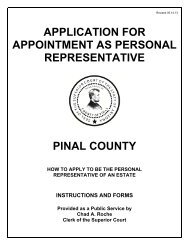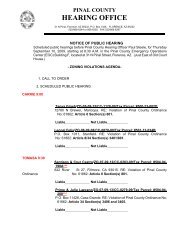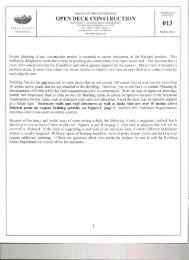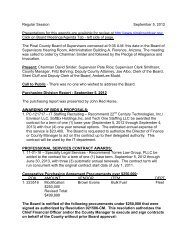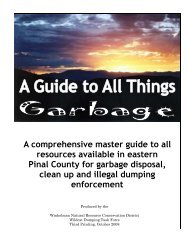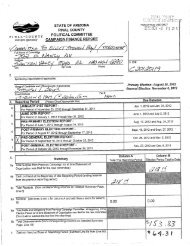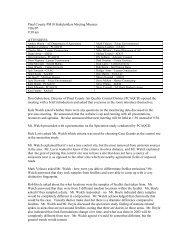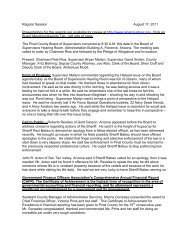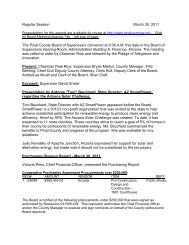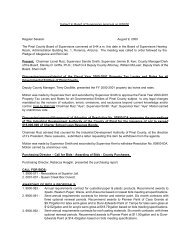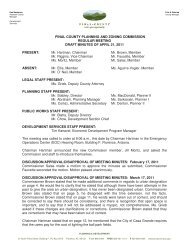Wood Burning Handbook - Pinal County
Wood Burning Handbook - Pinal County
Wood Burning Handbook - Pinal County
Create successful ePaper yourself
Turn your PDF publications into a flip-book with our unique Google optimized e-Paper software.
Maintain Your Fire Properly –<br />
Watch the Temperature<br />
Do Not Close the Damper or Air Inlets Too Tightly - The fire will smoke from lack of air.<br />
Follow the <strong>Wood</strong> Stove or Fireplace Manufacturer's Instructions Carefully - Be sure that<br />
anyone who operates it is also familiar with these instructions.<br />
Your Actions Determine How Efficiently Your Fireplace or <strong>Wood</strong> Stove Will Operate - A<br />
good wood stove/fireplace is designed to burn cleanly and efficiently, but it can not do its<br />
job right if you do not cooperate.<br />
Watch for Smoke Signals!<br />
Get into the habit of glancing out at your chimney top every<br />
so often. Apart from the half hour after lighting and refueling,<br />
a properly burning fire should give off only a thin wisp of white<br />
steam. If you see smoke, adjust your dampers or air inlets to<br />
let in more air. The darker the smoke, the more pollutants it<br />
contains and the more fuel is being wasted.<br />
Inspection and Upkeep - For Safety’s Sake<br />
Periodic inspection of your wood stove or fireplace is essential to<br />
ensuring its continued safe and clean-burning operation. Keep in<br />
mind the following points when performing your fireplace inspection:<br />
<br />
<br />
Chimney Caps can be plugged by<br />
debris, which will reduce draft.<br />
Chimneys should be cleaned professionally at least once a year to remove<br />
creosote buildup. Remember – Creosote can fuel a chimney fire<br />
that can burn down your house!<br />
Catalytic Combustor holes can plug up; follow instructions to clean.<br />
Stovepipe angles and bolts are particularly subject to corrosion.<br />
Gaskets on airtight stove doors need replacement every few years.<br />
Seams on stoves sealed with furnace cement may leak. Eventually the cement dries out, becomes<br />
brittle, and may fall out.<br />
Firebricks may be broken or missing.<br />
Grates or stove bottoms can crack or break.<br />
13



